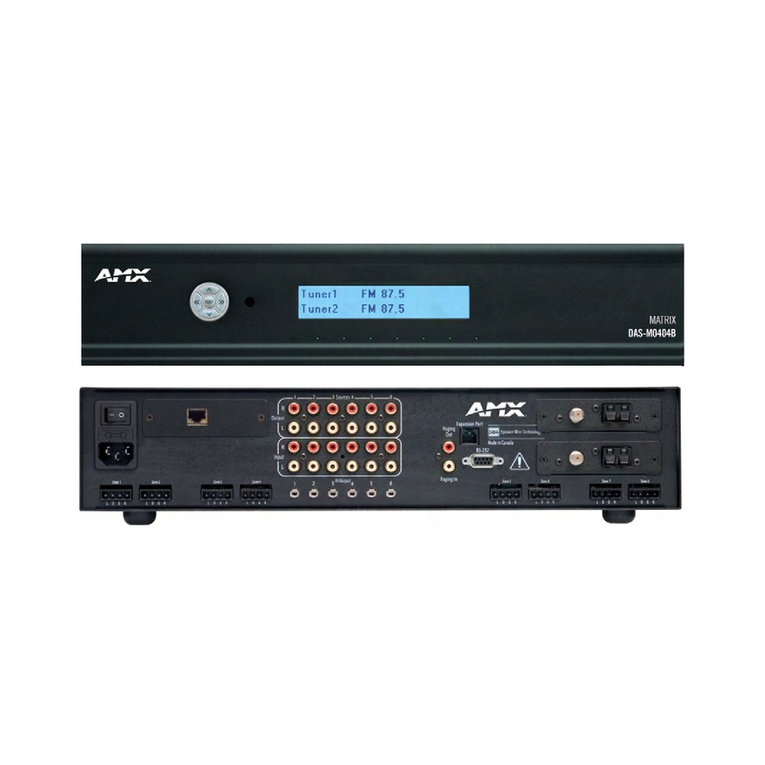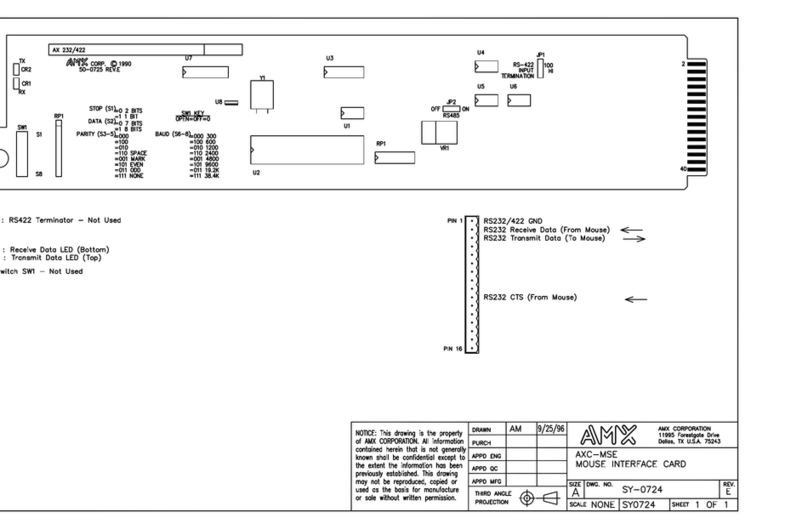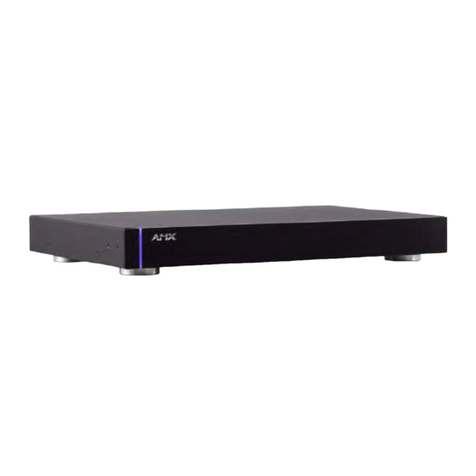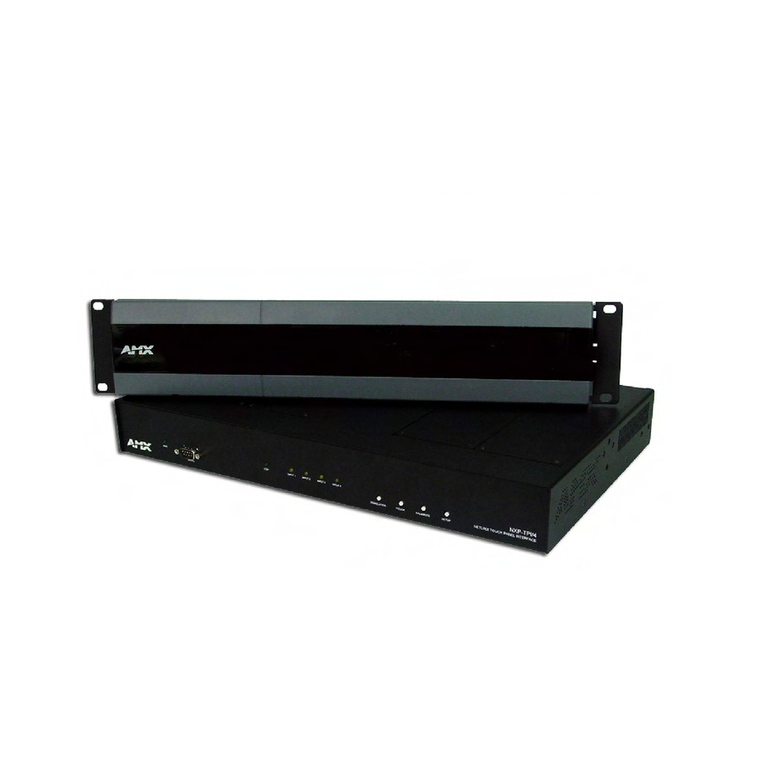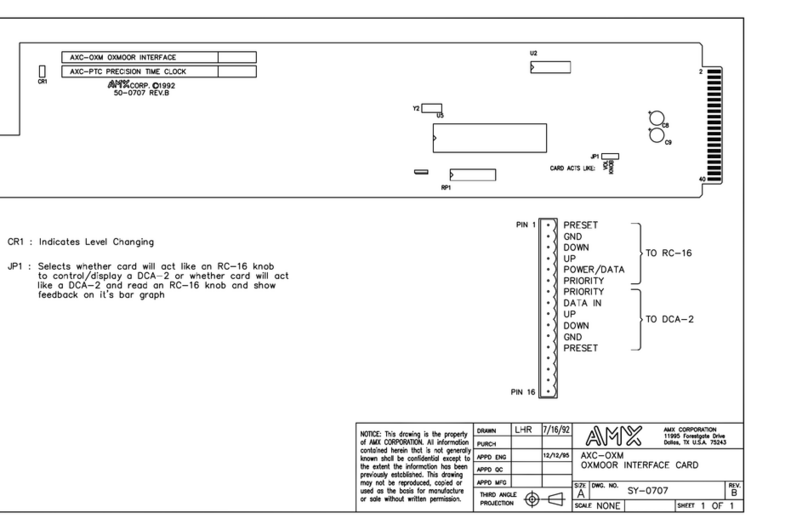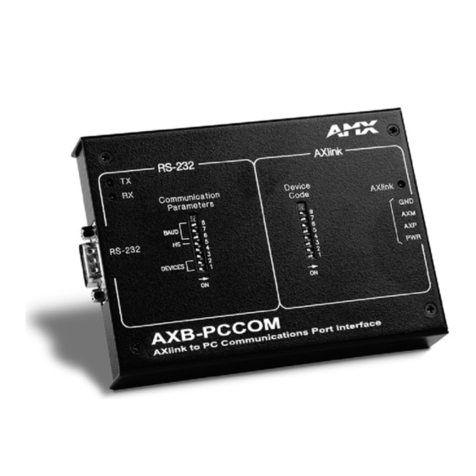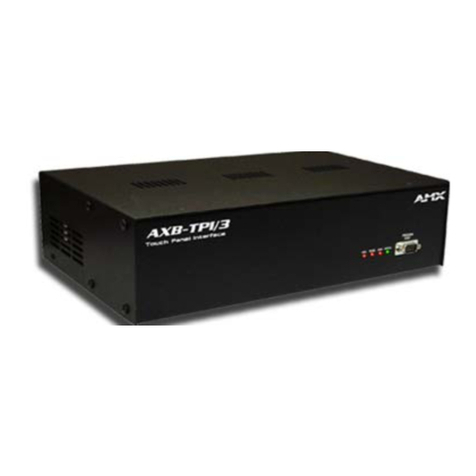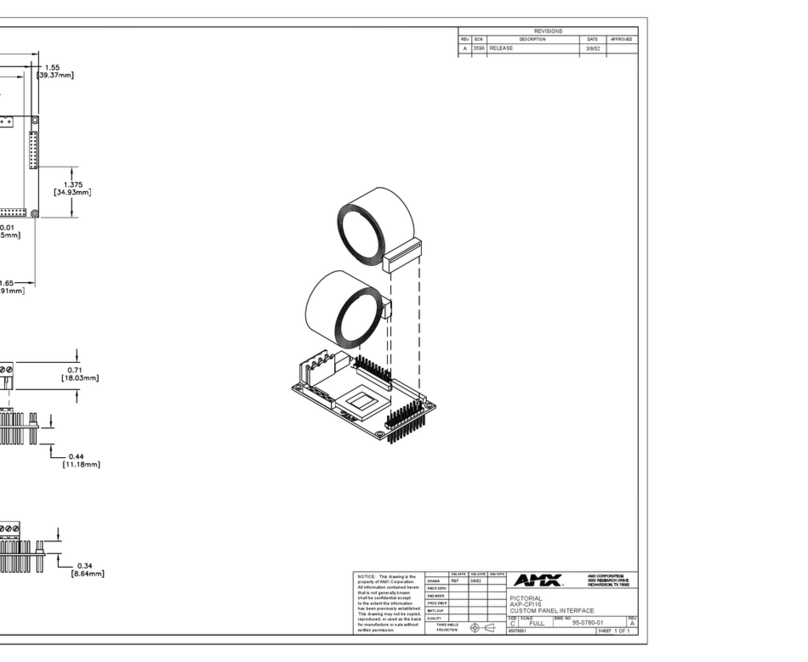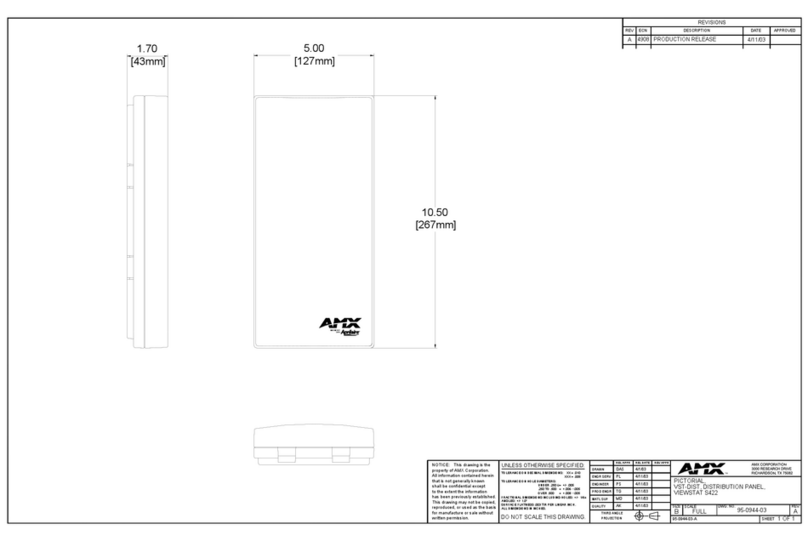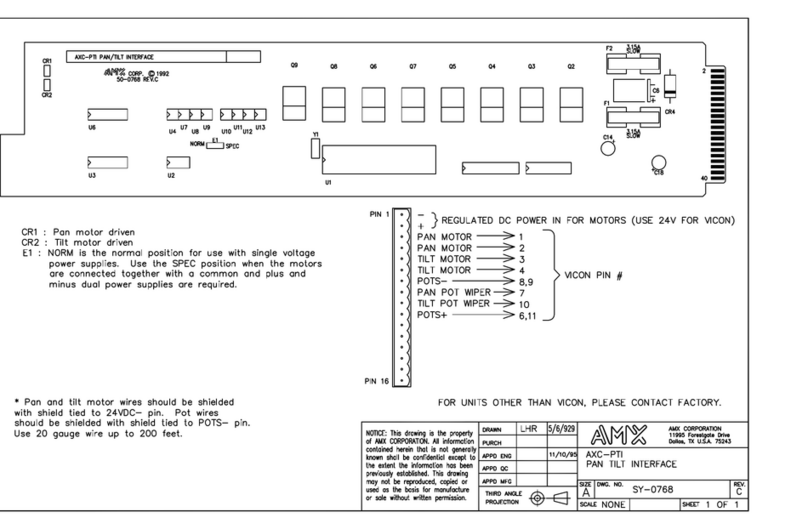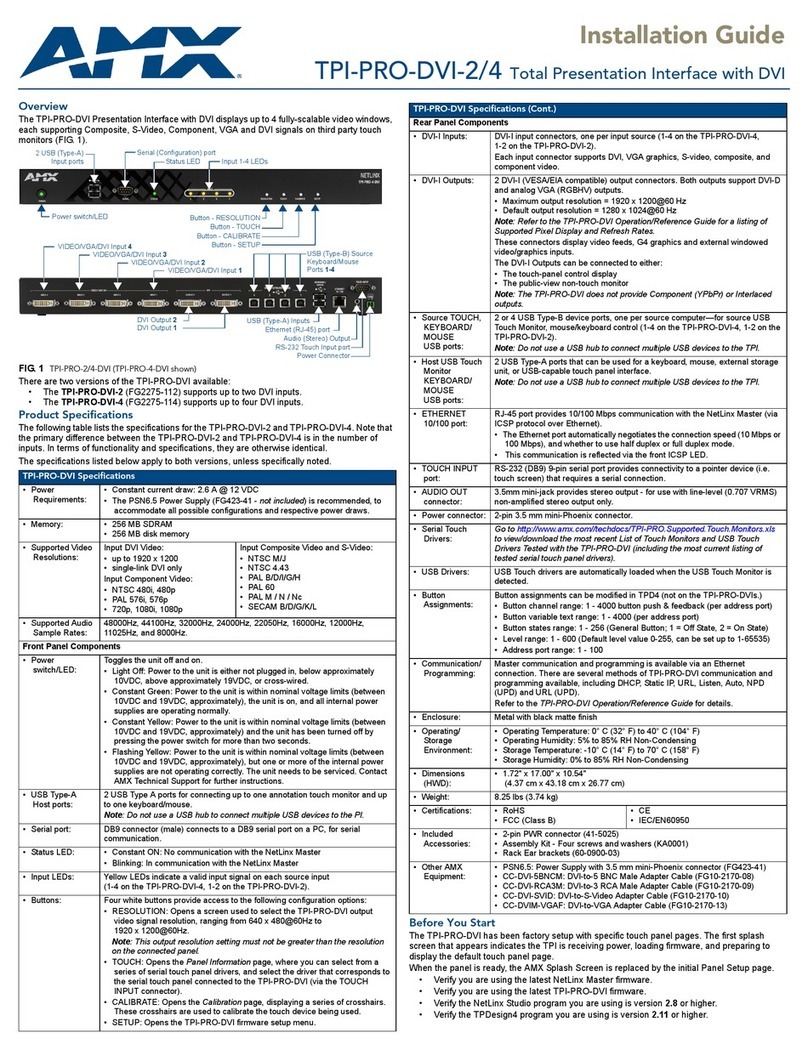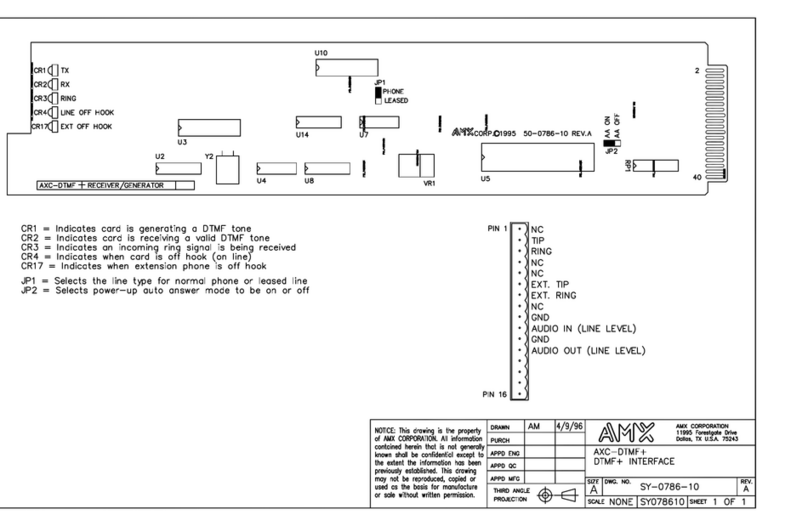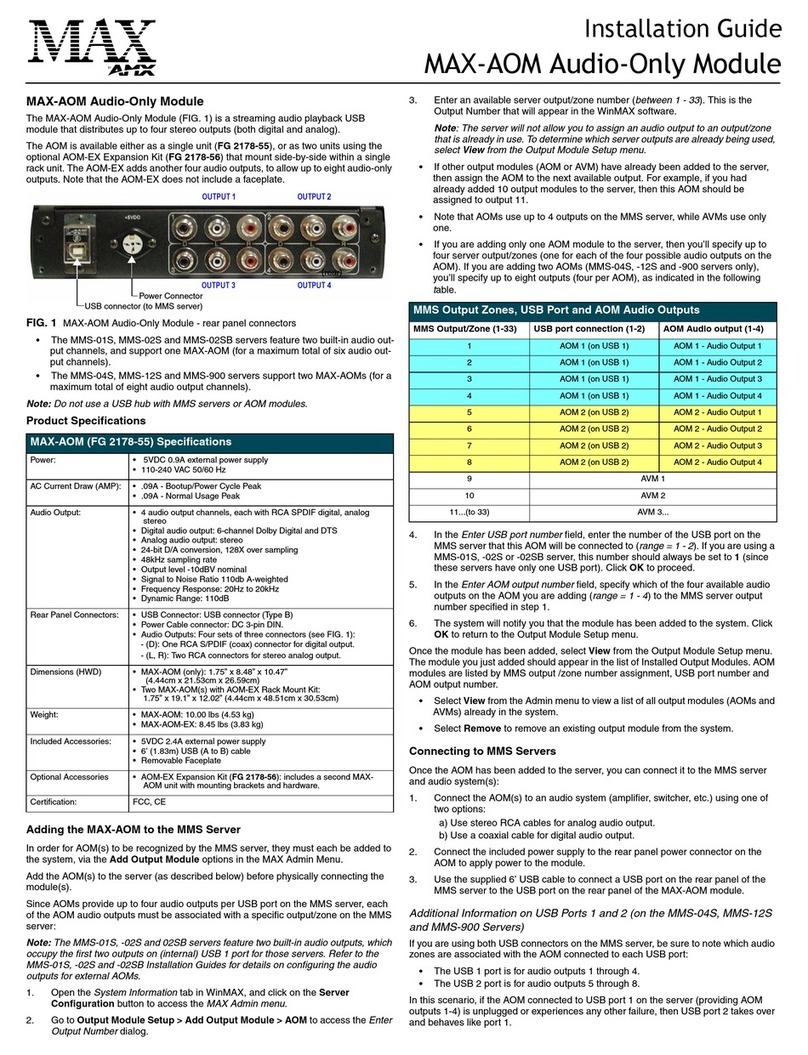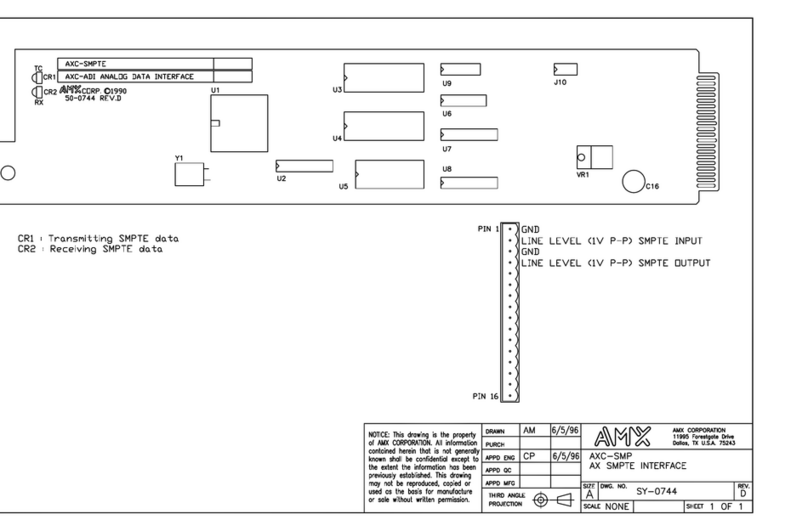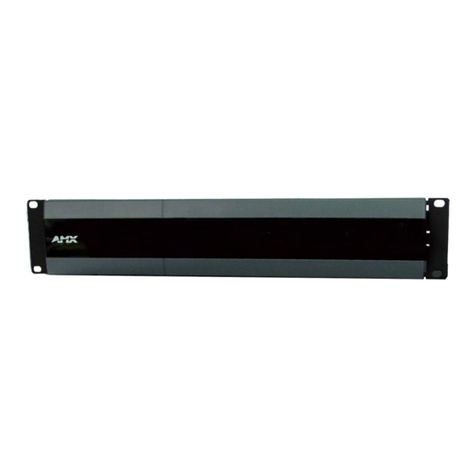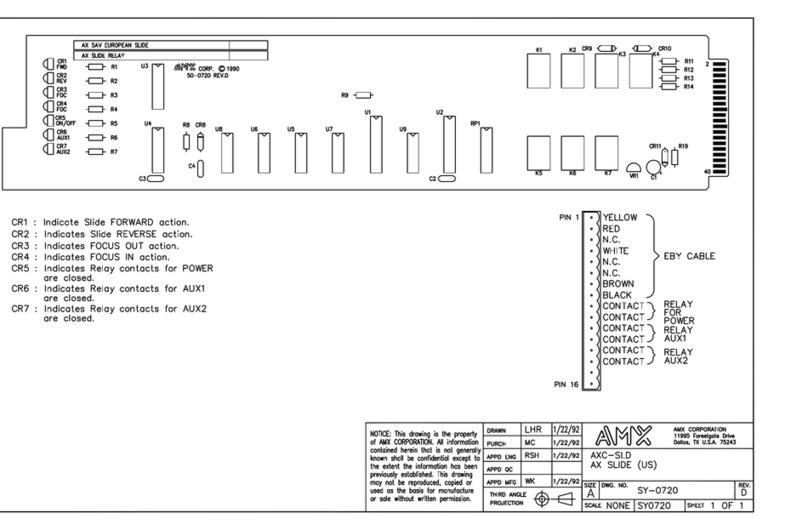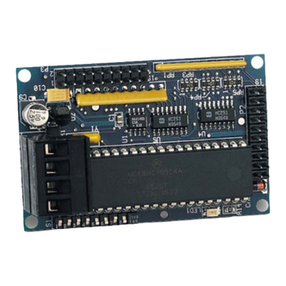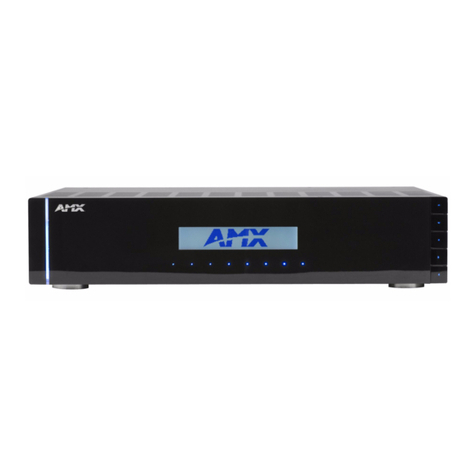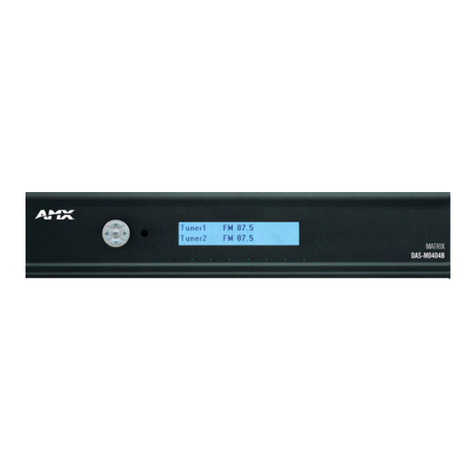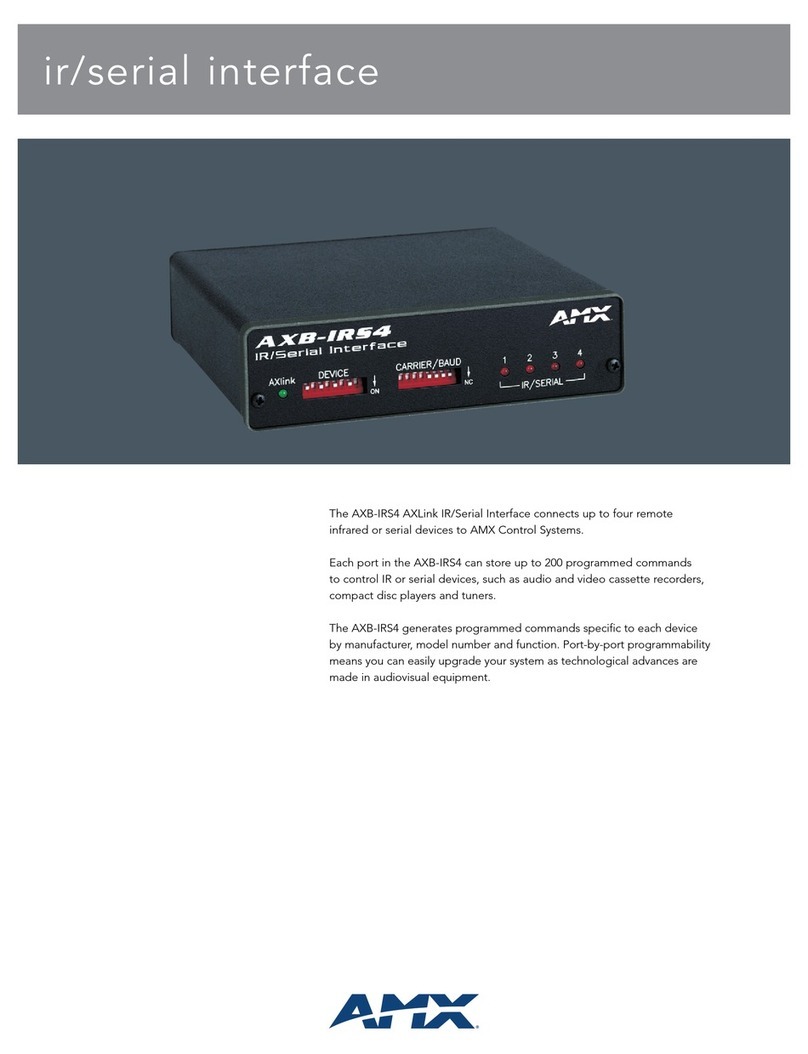
Configuration and Installation
6AXB-DMX512 DMX512 Interface
Replacing the Lithium Battery
A lithium battery (FIG. 8) with a life of approximately 5 years, protects stored presets if a power loss
occurs. The battery is not used when DC power is supplied to the AXB-DMX512. Write down the
replacement date on a sticker or label by adding 5 years to the date of installation, and then attach it to
the bottom of the AXB-DMX512.
Contact your AMX dealer before you replace the lithium battery and verify that they have a current copy
of the Axcess program for your AXB-DMX512. This will avoid any inadvertent loss of data or a service
outage.
You will need a flat-blade tool (non-conducting) that can be slipped under the lithium battery to pry it up
and out of the socket.
1. Discharge the static electricity from your body.
2. Unplug all cables from the AXB-DMX512.
3. Remove the AC-RK and AXB-DMX512 from the mounting rack. Otherwise, go to step 4.
4. Remove the five pan-head screws on the top of the AXB-DMX512 enclosure.
5. Pull the two enclosure halves apart and set the bottom portion of the enclosure on a flat surface.
6. Locate the battery on the circuit card.
7. Carefully pry the battery out of its socket and insert the new battery. Write down the next
replacement date on a sticker or label by adding 5 years to the replacement date, and then attach it to
the bottom of the AXB-DMX512.
8. Plug all cables back into the AXB-DMX512.
9. Place the top portion of the enclosure back onto the bottom portion. Then, refasten the five pan-head
screws.
10. Reconnect the cables removed for battery replacement.
FIG. 8 Lithium battery and socket
Battery (CR2032 type - 20mm coin cell)
socket
All control commands in AXB-DMX512 memory are lost when the lithium battery is
replaced
Static electricity can damage electronic circuitry. Before removing the lithium battery
from the enclosure, discharge any accumulated static electricity from your body by
touching a grounded metal object.
There is a danger of explosion if you replace the battery incorrectly. Replace the
battery with the same or equivalent type recommended by the manufacturer. Dispose
of used battery according to the manufacturer's instructions. Never recharge,
disassemble, or heat the battery above 212 °F (100 °C). Never solder directly to the
battery or expose the contents of the battery to water.
